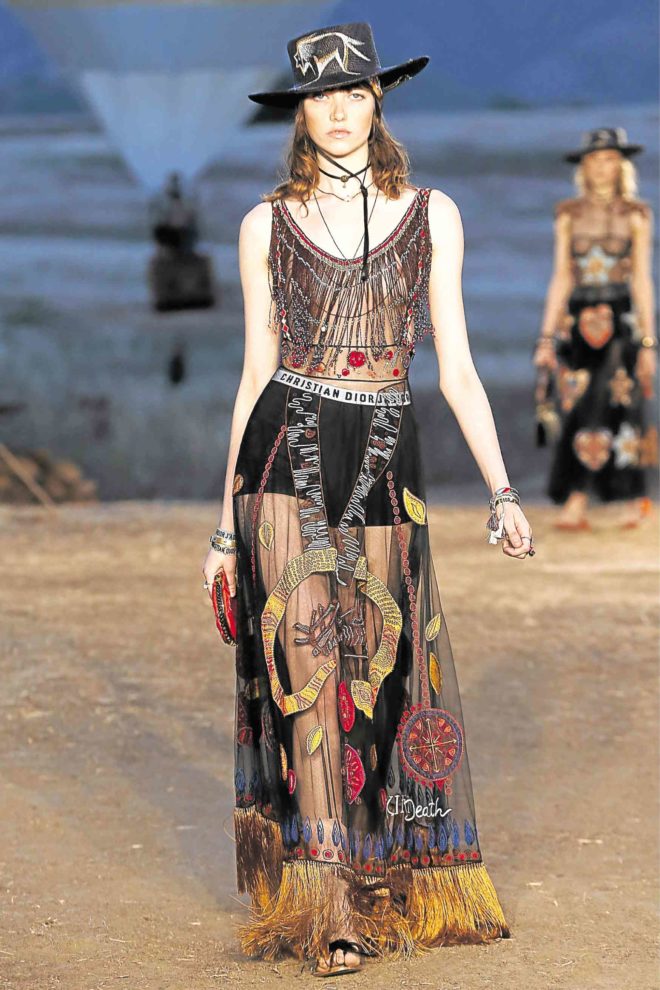
Italian designer Maria Grazia Chiuri, the first female creative director of Dior, launched the brand’s 2018 Cruise Collection in Calabasas, a rocky canyon preserve 25 miles west of Hollywood.
Two hot air balloons proclaimed the rebranding of Dior’s Eau Sauvage (a favorite men’s cologne of my youth).
Celeb guests and the fashion flock were asked not to wear heels, as pillows and tents became the front row and the packed sand was the runway for the models, who wore flat sandals and dirty boots.
Rough weather
Chiuri’s apparent inspirations for her 80-piece show were the rough weather Western wardrobe of Santa Fe painter Georgia O’Keeffe (turquoise bangles, skinny leather belts and Navajo blanket coats), Frida Kahlo’s imagery (a Tarot card, Dia de los Muertos embroidery), and even Diana Vreeland’s early modeling days for Harper’s Bazaar, when she wore a black felt Spanish hat and a maxi skirt, two items worn by almost every model for the show.
Another reference: the primitive wall paintings in the Lascaux caves in France, estimated to be 20,000 years old. Chiuri discovered that Christian Dior was fascinated by Lascaux—the latter’s Ovale collection of 1951 featured prints inspired by the paintings.
Chiuri played on the idea in her own way, but like Dior, her pieces had a mystical, otherworldly quality.
Many of the dresses highlighted Chiuri’s favorite silhouette: square neckline, corseted bodice, A-line midi skirt.
There were also plenty of her signature balletic, sheer embroidered gowns. Some came with a sequined handprint motif, while others had primitive-looking embroideries of women and animals.
In earthy shades of tan, rust, ochre, terra-cotta and dusty blues, the prints looked surprisingly close to the real cave drawings.
Coats in the waisted, midi-length silhouette so associated with O’Keeffe were among the show’s subtlest and most chic-looking pieces.
Easy denim looks embroidered with beads numbered among the other highlights, along with several ethereally pretty prairie dresses.
These creations were not costumes—they were powerful, versatile pieces for the pioneering women who will wear them all.
Overall, these clothes are ready for the natural world inside city borders, referencing women’s innate connection to the wild and the primal. —CONTRIBUTED